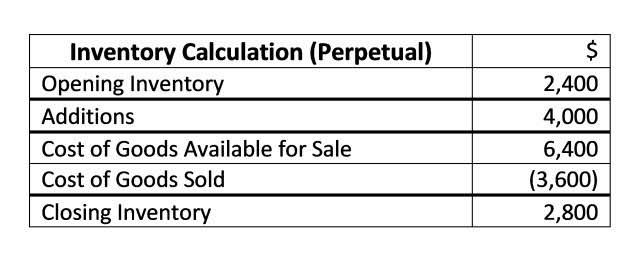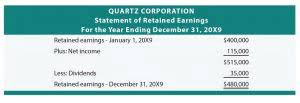
Trade discounts are usually given to wholesalers that order large quantities of a product as well as retailers with good relationships with the manufacturer. Purchase discounts or cash discounts are based on payment plans not order quantities. To calculate a trade discount, you need to know the list price of the product or service and the percentage discount offered. The trade discount is applied to the https://www.bookstime.com/ list price, not the discounted price, and factors such as quantity, timing, and conditions of the purchase may influence the discount. Trade discounts are used to incentivize customers to buy in bulk, purchase products during off-peak periods, or take advantage of other favorable conditions. Quantity discounts are offered to customers who purchase large quantities of a product or service.
Company

These platforms can handle complex discount structures, track historical discount trade discount examples data, and integrate with other financial systems to provide a comprehensive view of a company’s financial health. By leveraging such tools, businesses can streamline their discount management processes and focus on strategic decision-making. For example, let’s say that Manufacturer M sells 1,000 units of product on credit to a Wholesaler W at a list price of $10 per unit, with a 5% trade discount granted by the seller to the buyer.
How do trade discounts impact pricing strategies?
Quantity discounts are reductions in price offered to buyers who purchase goods in large volumes. These discounts encourage bulk buying, which can lead to significant cost savings for the purchaser. For example, a supplier might offer a 10% discount on orders exceeding 1,000 units.
- For example, if the product already had a cash discount of 5%, the trade discount would still be calculated based on the list price, not the discounted price.
- For instance, a supplier offering consistent discounts to a retailer can expect regular orders, which helps in optimizing production schedules and reducing lead times.
- This mutual benefit creates a more stable and predictable supply chain, where both parties can plan and forecast with greater accuracy.
- The process typically involves determining the discount rate and applying it to the list price of the goods.
- A Trade Discount is a reduction from the listed or catalog price of a product or service offered by a seller to a buyer during a business-to-business (B2B) transaction.
- For example, when goods with list prices totaling $1,000 are sold to a wholesaler that is entitled to a 27% trade discount, both the seller and the buyer will record the transaction at $730.
Calculation of Trade Discounts

You can usually find this price listed in the manufacturer’s catalog or on their website. So those of you who want to buy in bulk or meet certain conditions can get a grant from the original list price of the product in the form of a trade discount. The final objective of every organization is to increase sales revenue, and the trade discount is the primary tool to achieve it. However, a cash discount is also a tool used to achieve the organization’s objectives. Usually, the customers have the habit of bargaining and giving them these discounts; it enables a firm to achieve its objectives and retain the customer. A trade discount is a routine reduction from the regular, established price of a product.
Solution: Step-by-Step Calculation

Manufacturers and wholesalers typically produce catalogs for customers and vendors to order products from. The prices listed in the catalogs are often called list prices or manufacturers suggest retail price (MSRP). Other business within the industry that use the manufacturers products rarely pay list price for them. Instead, the manufacturer gives the wholesaler or retailer a discount on each purchase or a percent off of the list price.

This encourages customer loyalty by incentivizing them for continued purchases, as well as increasing sales when customers know they can receive bulk discounts. It is generally recorded in the purchases or sales book, but it is not entered into ledger accounts and there is no separate journal entry. However, here is an example demonstrating how a purchase is accounted in case of trade discount. The final entry at the time of payment, in the books of ABC Ltd, will show the cash worth 980,000 as debit as this is the amount being received. The cash discount of 20,000 will also be a debit since it is an expense for the business. The total accounts receivable worth 1,000,000 will be credited as total assets (receivables) are being reduced.
- As we discussed above, using a trade discount calculator increases the purchase quantities.
- This helps businesses maintain cash flow throughout the year and keep inventory fresh.
- Instead, they are reflected in the invoice or receipt after the purchase has been made.
- Trade discounts come in various forms, each designed to incentivize different purchasing behaviors.
- Quantity discounts are particularly prevalent in industries where economies of scale play a significant role, such as manufacturing and wholesale distribution.
- By lowering the amount of cash required for inventory purchases, trade discounts can enhance a company’s operating cash flow.
This increased liquidity can be crucial for maintaining day-to-day operations and meeting short-term obligations. Moreover, trade discounts impact the balance sheet by altering the value of inventory. When goods are purchased at a discounted rate, the inventory is recorded at this lower cost, reflecting a more accurate valuation of income summary assets.
Trade discounts are offered by businesses to customers who purchase their products or services in bulk. The customer’s total purchase amount determines the discount received; the more they buy, the greater the savings off of list prices. This type of price reduction is usually negotiated between the manufacturer and wholesaler/retailer before any orders are placed. Such a discount takes place when the cost of goods or services is reduced at the time of purchase of large quantities of goods, providing benefits to those who shop in bulk. Businesses offer trade discounts to not only reduce their inventory costs but also motivate customers to make more purchases.

A reduction granted by a supplier of goods/services on list or catalogue price is called a trade discount. This is done due to business consideration such as trade practices, large quantity orders, etc. A trade discount is calculated on the list price itself before any transaction takes place. In other words, it will be calculated on the list price and then deducted from the same. Eventually, the remaining amount becomes the sale price or the invoice price for the items. 10 vehicles were purchased by Unreal Pvt Ltd with a 5% trade discount on the list price of 1,00,000 each.




















